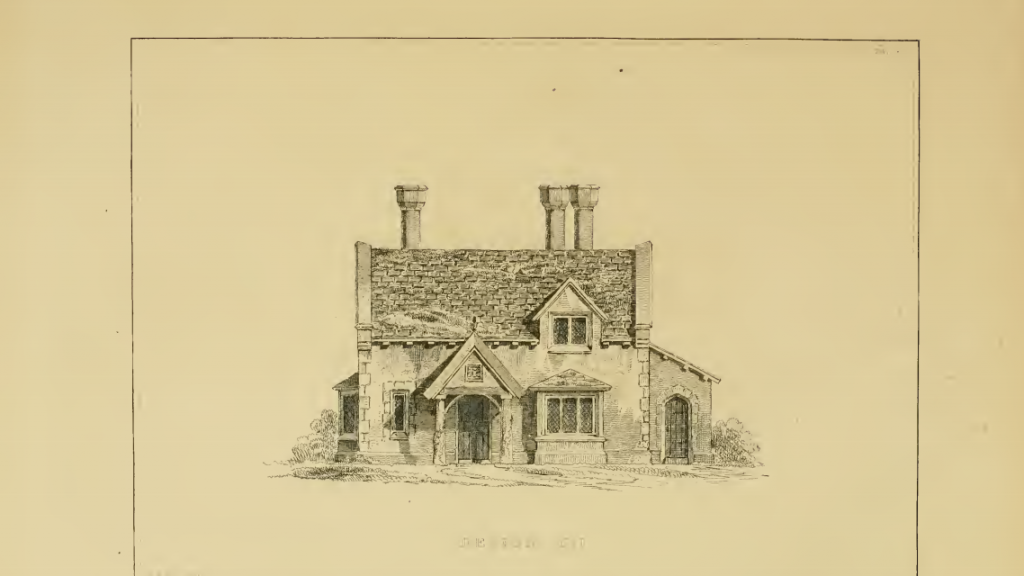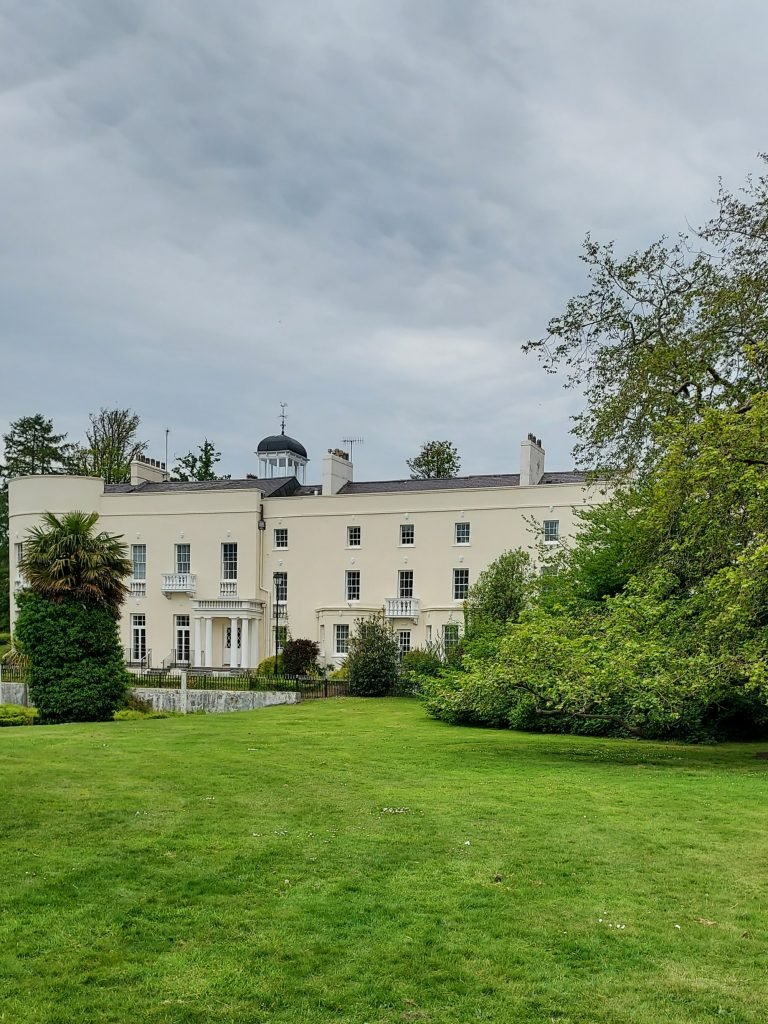Genealogist Walking.
Onwards for my self-styling Genealogist walking with all due respect to Derek Brockway the ‘Weatherman Walking’.
After last time’s stroll along through Blackpill. Eva and I another day, set off following the aforementioned Mumbles Railway back towards Swansea in front of the Ashleigh Road playing fields also known as George V fields. In light of my blogs so far the 1831 map I’ve used previously shows a few dwellings along the way which I will have a look at the first being ‘Lower Sketty’[1] which admittedly stands a bit back from our walk, but I am a fully paid up member of the poetic licence society. In 1831 the property was available for lease…
“A desirable Residence for a small Family. All that very desirable farm and lands called Lower Sketty. The Farm consists of a neat Cottage, lately repaired, with an excellent Garden in front; also, of a Stable, Beasthouse, and Barn, contiguous thereto, and 56 Acres of excellent Arable, Meadow, and Pasture Land, in high state of cultivation. The Lands are delightfully situated within the distance of three miles of Swansea, commanding a fine view of Swansea Bay and the Bristol Channel. If desirable the proprietor will have no objection to divide the Lands into two lots. For particulars apply at the Office of Messrs. James and Collins, Solicitors, Swansea…”[2]
This land, impinges I’m sure on the present-day playing fields[3]. In 1841 William Hughes a farmer aged 50 was living in Lower Sketty[4] it would appear he had taken the lease on. In 1851 the family at Lower Sketty were still that of William Hughes aged 62, he was married, Head of the household, a freehold farmer born in the Parish of Swansea, his wife Mary Hughes aged 55, born also Parish of Swansea, his niece Emmy Rosser aged 18, born Parish of Swansea, William Jones aged 2, Visitor (it would be interesting to work out this child’s relationship to William) born Parish of Swansea, Isaac William aged 24 unmarried, a Servant, born Parish of Swansea, Elizabeth Davies 28, unmarried, a Servant, born in the Parish of Llangyfelach, Glamorganshire and Mary Harry 20 unmarried, a Servant, born Narberth, Pembroke, it seems the land was freehold now[5]. This family is eminently traceable, contact me if you would like to know more.

Back to the walk, along the path on the old railway line. Past the Footgolf course! Then on the left as we head towards Swansea sits the Boating Pool Lodge listed in CADW[6] or alternatively Ty Harry Lodge an…
“Early C19 lodge. Said to be a design of P F Robinson (1776-1858), which appears in his `Designs for Lodges and Park Entrances’ 1833, but [the] lodge appears on OS 25 1st Edition map with different plan to present, and is probably extended to N.”[7].
The census will always be the first port of call to find a person at an address, 1911 gives William James Luxton living there at Ty Harry, Head of the household, he was married aged 31, an Electric crane driver working at Baldwins Steel works also known as Cwmfelin Steel works, he was born in Swansea, his wife was Jane Luxton (nee Williams) aged 27, they had been married for 6 years no children yet, she was also born in Swansea. Living there also was Jane’s mother Martha Williams a widow aged 62, she was Charwoman working on her own account born Cillgeran Cardiganshire[8]. Another family to investigate perhaps, on the winding road of family history. If you are interested Robinson’s design can be seen from the afore mentioned book ‘Designs for Lodges and Park Entrances’[9].

Further along the walk, just before we turn up into Singleton Park is Singleton Abbey, originally known as Marino when it was built in 1784 for Edward King. Swansea Museum is a good place to kick start a search for him. A watercolour…
“… although not signed or dated, carries its title in Thomas Baxter’s hand. It shows the unique house, ‘Marino’, built for Edward King and his wife, Jane Morris (sister to John Morris, the industrialist) in 1784. Edward King was responsible for collecting His Majesty’s Customs at Swansea. The innovative architect was William Jernegan (1750/1-1836), who enjoyed a long and successful career at Swansea.
In 1817, John Henry Vivian, owner of the Hafod Copper Works, leased ‘Marino’ and later purchased it, making only modest alterations initially before financing the major building scheme which created ‘Singleton Abbey’ around the original house.” See the image on the Museum website.[10]
This Gothic-style building began life as an octagonal marine villa sited to view Swansea Bay. Set as it is on a small hill looking over the bay. More people to reflect on during our stroll.

Into Singleton Park, we didn’t walk past the farm, that’s for another day. My next and last note for this piece will be Sketty Hall. Built in the 1720s for Rawleigh Dawkin (later Mansel) the son of the squire of Kilvrough in Gower, and on his death passed to his brother Mansel Mansel. Refigured about 1780 by the addition of the bay windows. Then Swansea architect, William Jernegan (see above) later added the western part of the frontage for Ralph Sheldon, MP. In the 1820s the house was remodelled by Charles Baring of the London merchant banking family. He added an extra floor to Rawleigh Dawkin’s house and a parapet running the whole length of the south front. In 1831 the house was bought for £3,800 by Lewis Weston Dillwyn, owner of the Cambrian Pottery in Swansea. He commissioned the architect Edward Haycock Snr. in the early 1830s to build the present entrance hall and adjacent large room on the north side of the house. In 1881 Frank Ash Yeo, Chairman of the Swansea Harbour Trust, added the dining room to the east of Dillwyn’s entrance hall. Richard Glynn Vivian, an art lover from the Vivian family who gave the Glynn Vivian Art Gallery to Swansea, bought the Hall in 1898 as his home. He added the balconies and masks of Italian marble, laid out the ornamental gardens and installed the gazebo tower on the roof. During the Second World War, the house was requisitioned to serve as an ARP area headquarters. Later it was used by the British Iron and Steel Research Association as a major research centre for the steel industry. The Hall was completely renovated in 1993.[11] Selecting one name from the above and a quick search finds Frank Ash Yeo Esq. of Sketty Hall as an ex-officio Guardian for the Swansea and District Poor Law Union[12]. This part of our walk ended outside Sketty Hall, with a brief glimpse via the poor law record into social history, and recording enough families to fill a book.

Genealogist walking, where next?
Llandovery.
Contact me if you are interested in a heritage walk or tour around a locality in your ancestry.
[1] https://www.visionofbritain.org.uk/maps/sheet/first_edition/sheet37
[2] The Cambrian. (1831) Lower Sketty. The Cambrian. 19 November. p. 1e. https://newspapers.library.wales/view/3327600/3327601/3/ : accessed 30 May 2021.
[3] Google Maps. (2021) Swansea. https://www.google.com/maps/@51.6071629,-3.985839,1940m/data=!3m1!1e3?hl=en-US : accessed 09 June 2021.
[4] Census records. Wales. Lower Sketty, Swansea, Glamorganshire. 06 June 1841. HUGHES, William. HO107/1424/F. Collection: Census Transcript Search, 1841-1911. www.thegenealogist.co.uk : access 30 May 2021.
[5] Census records. Wales. Lower Sketty, Swansea. 30 March 1851. HUGHES, William (head). HO107/2466/F. Collection: HO107/2466/F. www.thegenealogist.co.uk : accessed 30 May 2021.
[6] CADW. Summary Description of a Listed Buildings. Boating Pool Lodge in Singleton Park . https://cadwpublic-api.azurewebsites.net/reports/listedbuilding/FullReport?lang=&id=11763: accessed 09 June 2021.
[7] UK Gov. CADW/ICOMOS REGISTER OF PARKS AND GARDENS OF SPECIAL HISTORIC INTEREST IN WALES SINGLETON PARK AND SKETTY HALL. http://orapweb.rcahms.gov.uk/coflein/C/CPG252.pdf : accessed 09 June 2021.
[8] Census records. Wales. Singleton, Cockett, Swansea. 02 April 1911. LUXTON, William James (head). RG14PN32734 RG78PN1868 RD594 SD1 ED15 SN256. Collection: 1911 England & Wales Census. www.findmypast.co.uk : accessed 09 June 2021.
[9] Robinson, P.F. (1833). Designs for Lodges and Park Entrances. London: Priestly and Weale. p. 21. https://ia800207.us.archive.org/9/items/designsforlodges00robi/designsforlodges00robi.pdf : accessed 09 June 2021.
[10] Swansea Museum. Marino – Thomas Baxter. http://www.swanseamuseum.co.uk/swansea-a-brief-history/old-houses-and-places/marino-thomas-baxter : accessed 09 June 2021.
[11] Wikipedia. Sketty Hall. https://en.wikipedia.org/wiki/Sketty_Hall : accessed 09 June 2021.
[12] Swansea and Surrounding Area, Wales, Poor Law Union Records, 1836-1916. YEO, Frank Ash. 1875-1879. Collection: Poor Law Records. West Glamorgan Archive Service, Swansea, Wales. www.ancestry.co.uk : accessed 09 June 2021.
